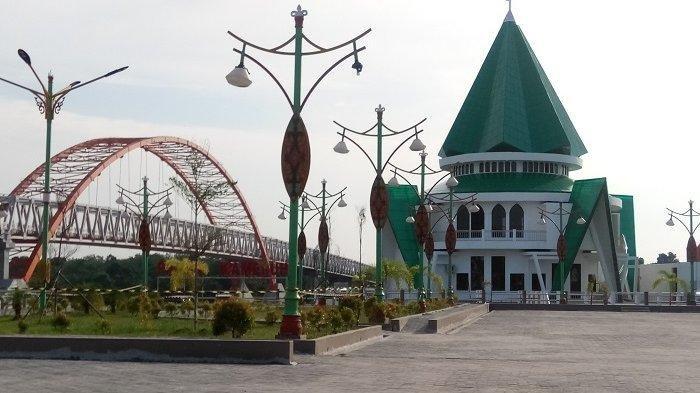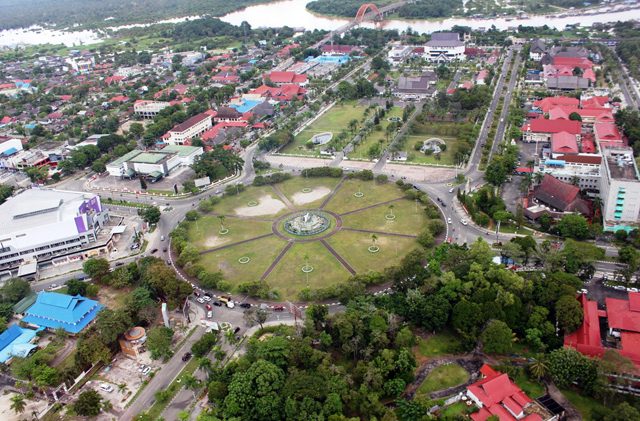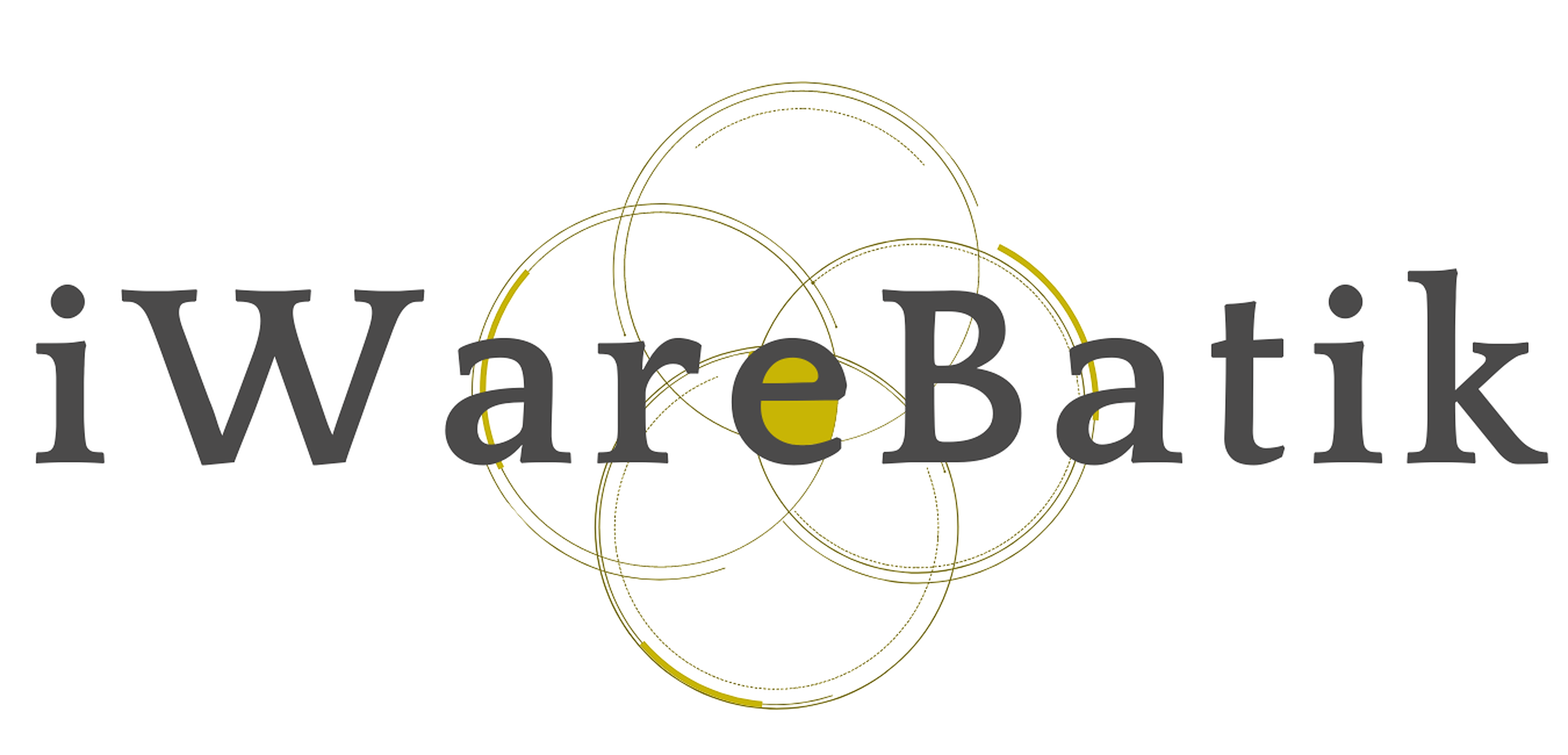Home / Batik Regions – Central Indonesia – Kalimantan Island – Central Kalimantan / Pasuk Kameloh in Palangkaraya City
Cultural Destination
Embrace the spirit of the place!
Pasuk Kameloh in Palangkaraya City

Pasuk Kameloh Park in Palangkaraya city (photo: Tribunnews.Faturohman)

The landscape of Palangkaraya city (photo: Jhoni Prihanto.Kaltengpos)
Palangkaraya City
Palangkaraya city is another unique destination you cannot miss in Central Kalimantan. This modern and vibrant city also offers different and meaningful experiences to learn local wisdom with friendly Dayak communities in the city. One of its iconic spots is the Pasuk Kameloh Park. From here you could gaze a panoramic view of the beautiful sunset, a combination of green space with the traditional dome-roofed mosque as typical Palangkaraya architecture. It is also an outdoor cultural park where local urban arts are exhibited and performed. You can enjoy the breezing air and eat delicious dishes by the river.
Cultural Tourism Destination
Palangkaraya City
Tourist Attractions in Central Kalimantan
Batik Villages in Central Kalimantan
Home / Batik Regions - Central Indonesia - Kalimantan Island - Central Kalimantan / Batik Villages in Central Kalimantan Batik Villages in Central Kalimantansupport the local workshop Brief Story: Batik Benang Bintik is the hallmark of Central Kalimantan's typical...
Central Kalimantan
Batik Motifs
Kaharingan
The Kaharingan or ‘tree of life’ based on the Dayak tribes’ belief system. This tree symbolizes
Gumin Tambun
Based on Hindu mythology, this motif symbolizes lucks, abundant wealth, and
Enggang Dayak
Local people beliefs that hornbills are an incarnation of the Commander of the Birds. It has supernatural
Discover
Indonesian
Batik
Motifs
Malinau Cultural Festival
You will witness a unique competition that might not be found other than in
Teguh Bersatu
This batik motif shows the strength of the people of Kupang. It also represents a sense of
Besurek Rafflesia
The term “Basurek” refers to a textile that contains letters or inscriptions
Salakanagara
Salakanagara batik motif illustrates the first kingdom in the Betawi land
Sero Tangga
The Sero Tangga illustrates an endearing feeling and sacrifices of a person to fulfil
Daun Lada Hitam
The black pepper motif represents the main commodity of Bangka Belitung
Pinawetengan
The Pinawetengan Batik pattern was taken from a prehistoric inscription in
Besurek Rembulan
This batik illustrates praise for God who created the wonderful universe
Lontara
The Lontara script itself is a typical ancient script of Bugis and Makassar communities. History records that
Wakatobi
It symbolizes the coastal beauty of the Wakatobi island and the symbol of Patra symbolizes
Sido Mulyo
Sidomulyo is one of the classical motifs, which is specifically used for the bride’s costume in
Taiganja
Taiganja is a precious gold pendant that shows the social status of the Kaili family. It is
Enggang Dayak
Local people beliefs that hornbills are an incarnation of the Commander of the Birds. It has supernatural
Jupri Kembang Teh
Kembang Teh illustrates the tendrils of tea plants that grow in the highlands of
Pattimura
Pattimura is the name of an Indonesian hero who fought against colonialism in
Rumah Mamuju
the Batik motif illustrates the house of Mamuju King with the stairs, located on the left of the wooden stage house
Sekomandi
Its philosophical meaning is the eternal union which refers to a saying “until death do us part”
Parang Seling
Parang Seling or “alternating daggers” is a royal batik motif. It is a feminine variant of
Tangerang Herang
Tangerang Herang motif is a symbol of Tangerang city. The Tangerang Herang batik motif consists of
Srimanganti
The name of the Srimanganti motif is derived from Palace’s hallway that connects to
Kain Cual
Cual textile tradition has existed since the 17th century. The word “Cual” refers to
Paqbarre Allo
The word “Barre” means round and “Allo” means the sunlight. This motif is interpreted as
La Galigo
La Galigo is a literary work of the Buginese Epic that has 300 thousand epic lines. It is considered even
Gurdo Solo
Gurdo or garuda bird is the mount of the Indian god Vishnu. As the Sun Bird,
Ikan tambal
The word “Ikan” refers to fish. The philosophical meaning of Ikan Tambal means is
Rangkiang
The word “Rangkiang” refers to the rice granary in the Minangkabau language. It symbolizes
Daun Sirih
This motif illustrates betel leaves that are used by Lombok communities as traditional
Ake Patra
Ake is related to the divinity and the composition of the universe. It is a symbol of
Wirasat
Wirasat or divine inspiration is a gift from God. This inspiration is symbolized by
Kuda Kupang
Horses symbolize wealth. It contains noble values of virtuous characters that bring
Mahkota Siger
Siger is the crown of a noblewoman in ancient time. It is a symbol of femininity, strength, and
Tikar Natuna
The Tikar Natuna motif is adapted from the traditional making of pandanus mats in
Gentala Arasy
Built as high as 80 meters, the tower also highlights the historical side of
Kawung
The Kawung motif was created by Sultan Agung Hanyokrokusumo (1593 – 1645) as a symbolic gift for
Bale Lumbu
This motif signifies the welfare of the ancient Sasak society. Bale also symbolizes the
Manguni Minahasa
Manguni is identified as the symbol of the Minahasa people. Manguni is known as a
Gumin Tambun
Based on Hindu mythology, this motif symbolizes lucks, abundant wealth, and
Gigi Haruan Lidi
The Gigi Haruan Lidi motif is taken from the name of the cork fish and is a symbol of
Sandeq
Sandeq Boat is a symbol of the maritime importance of the West Sulawesi region. The greatness of
Bekantan Pakis
This motif represents Pakis Haji (Polystichum setiferum), an endemic plant in
Gonggong Siput
Gonggong (Strombus Turturella) is one type of sea snail found around
Kasih Tak Sampai
‘Kasih Tak Sampai’ is an idiom in the Indonesian language which refers to
Tanah Liek
The word “Tanah Liek” refers to clay in Minang language. It is also known as
Tubo Kelapa
Coconut tree is a symbol of a good character and strong mentality. It illustrates the more success a person, the more
Biji Kopi
The coffee seeds motif illustrates the pride of local coffee specialities in
Raja Ampat
Raja Ampat motif represents the marine life at Raja Ampat archipelago in
Hiu Taliyasan
Indonesia is also home to the world’s largest fish, the whale shark (Rhincodon typus). Hiu Taliyasan refers to
Tifa Totobuang
The batik motifs illustrate Maluku’s traditional music instrument called
Insang Ikan
Insang refers to the gills of the fish. This is a typical pattern of Malay ethnic who inhabits
Buketan Bali
The Balinese bouquet (Buketan Bali) is a floral arrangement and the name is
Parang Rusak
Another meaning behind this motif is an unconquerable spirit, symbolized by
Durian Pecah
Broken Durian motifs depict the foundation of faith. The second half signifies the mastery of
Tampuk Manggis Sasirangan
The motif illustrates the philosophy of the mangosteen fruit, which is
Honai
The Honai is inspired by the traditional house of the Papuan community living in
Prada Papua
The word “Prada” in the Javanese-Indonesian dialect means a batik textile that
Pati-Pati Pinehiku
It symbolizes the hierarchy in society and the social status of the Mekongga
Daun Simpor
This motif is inspired by the Simpor plant (Dillenia Suffruticosa) which is a typical
Tabir Tanjung
Tanjung flower is a type of Cherry tree flower, which is commonly found in
Dayak Kamang
Kamang motif is generally found in the Dayak tribe shield because it is believed to
Angsa Duo
According to legend, the Angso duo batik motif is a pair of swans that are believed to have led Princess
Awan Berarak
Awan Berarak is a combination of Dayak motifs and Malay patterns. The word ‘Awan Berarak’ means the
Tongkonan
Toraja’s traditional house is called Tongkonan. Tongkonan is a place for
Pala Salawaku
This motif illustrates the unique weapons of the Maluku region, namely
Merak Ngeram
The hatching peacock motif has a very deep meaning which refers to the sacrifice and
Leuit Sijimat
This motif reflects the daily activities of the Baduy tribe in Banten. The main ornaments of batik motif consist of:
Desa Na Tolu
The Desa Na Tolu characteristic pattern symbolizes the Batak philosophy of existence and
Lok Baintan Floating Market
As you can imagine, the most authentic thing is that you can buy things and even
Bomba Mawar
This motif means sacred love for family, kingdom, and God; It also illustrates
Gajah Way Kambas
The motif illustrates the Lampung’s natural reserve, the Way Kambas. it also symbolizes
Dayak Taghol
Dayak Taghol has a distinctive style of four curved lines and small dots. This motif represents
Kaganga Tanah Rejang
If Batik Besurek combines Arabic calligraphy motifs, then the Kaganga batik takes
Burung Bidadari
Bidadari birds are endemic birds in Halmahera. This motif represents an
Karawo Mahkuta
Mahkuta refers to Gorontalo’s traditional crown. It represents noble characters of
